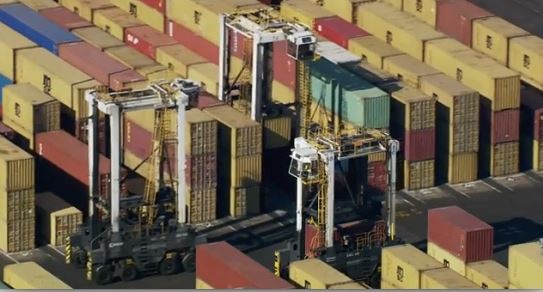For maritime shipping, profitability makes a ticking sound. When ships aren’t moving, money isn’t being made. That means containers have to move in and out of port quickly, flawlessly and as inexpensively as possible. Today, much of the equipment that moves those containers is automated and robotic, driven by a range of Internet-enabled sensors and other devices. The systems that control all those vehicles and machinery and devices are the Terminal Operating Systems (TOS) that Navis builds.
Speed is critical too. In our case, it’s speed to market.

Every port has a unique fleet of equipment, weather patterns, physical configurations and more. Our job is to simulate those unique environments and then create a TOS build that matches the footprint for each port as quickly as possible; we run those builds all day. My organization builds the IT infrastructure that lets Navis do that.
Today, much of the equipment at container ports is Internet-enabled, with a large array of onboard sensors and other devices: an environment of the Internet of Things. When we simulate a port and build out a TOS to that simulation, the IoT must be part of that design.
In an environment of automated equipment, every machine has to travel a precise route, stop at a precise point, and expect the containers it moves to be at a precise location. Onboard sensors continually deliver information to the port control center to ensure this is the case.
Sensors also track the general equipment maintenance schedules and conditions. They send alerts of operational problems, and for scheduled, preventive maintenance. They also serve as control mechanisms, allowing managers to slow, accelerate or stop a piece of equipment entirely.
Some of those sensors are cameras that help port managers keep an eye on every corner of the port. For both safety and security, that video data has to be indexed and retained for a pre-defined period of time.
Still other sensors monitor the environment. Wind conditions and other weather patterns have a direct impact on how well, how safely and how accurately robotic and remote controlled equipment perform.
The people on the ground are also delivering high volumes of data to the TOS from mobile devices: today that’s mostly in the form of tablets and smartphones, but we fully expect to see that growth to include wearables very soon.
As I mentioned, time is of the essence—and that means we need a very powerful IT infrastructure that gives us the storage capacity and processing horsepower that’s required to rapidly complete those simulations and builds. EMC and the Federation is our answer. VMware is our virtual development environment. We use two EMC VNX 5400 and one VNX 5600 systems for our SAN. File storage is handled with EMC Isilon. We use EMC Avamar and EMC Data Domain to handle backup and disaster recovery, and to ensure business continuity.
And it delivers. In our previous best-of-breed environment each build took six hours to complete—running at peak performance. Today, with our EMC infrastructure, we’ve got that down to one hour, no matter how heavy the load. We absolutely couldn’t do it without EMC.
Watch the video here!
